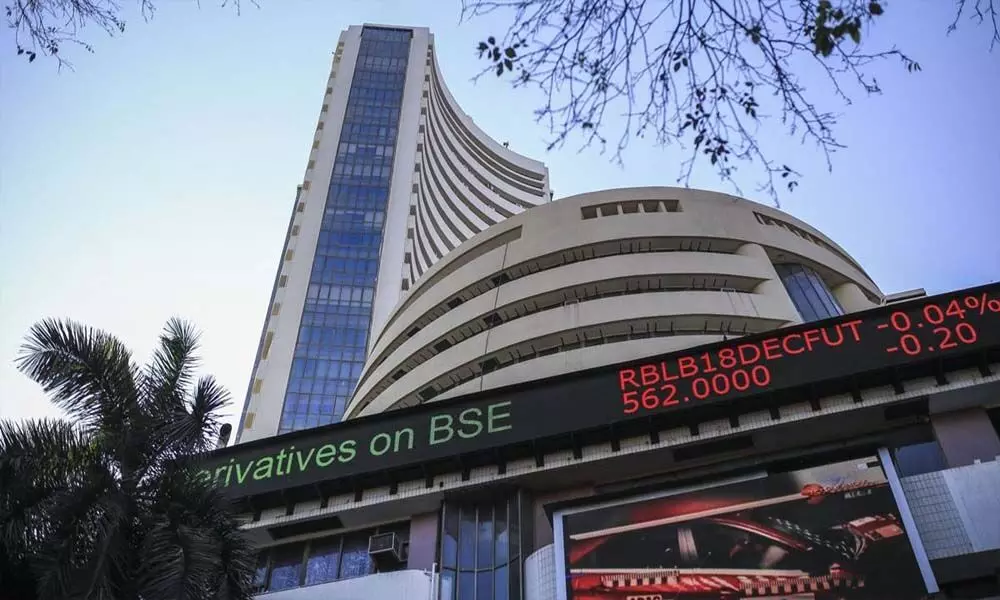Is stock market euphoria waning?
Of 13 issues listed from June 24, 2 issues are trading in negative territory, 2 others gained less than 8%. On the positive side, just one scrip has doubled in value, while other 3 stocks gained in the range of 60-80%
image for illustrative purpose

The period under review from August 12 to August 18 saw the BSE Sensex gaining 1,103.54 points or 1.98 percent to close at 55,629.49 points, while NSE Nifty gained 286.60 points or 1.73 percent to close at 16,568.85 points. In the process, both the benchmark indices registered fresh intraday highs on August 18 and closing highs on August 17. These were 55,792.27 points as closing high and 56,118.57 points as intraday high on BSE Sensex. Similar levels on Nifty were 16,614.60 points on closing basis and 16,701.85 points on intraday basis. At the same time BSE MIDCAP gained 411 points or 1.80 percent, while BSE SMALLCAP gained 1.47 percent. The point to be noted here is that the BSE MIDCAP and BSE SMALLCAP had made a top on August 3 and have lost some ground from there while Sensex and Nifty continue making new gains on almost every single day.
Primary markets saw four issues list simultaneously on Monday (August 16). The euphoria which existed a fortnight back in case of primary markets is certainly waning and indications of more companies slipping into negative territory is likely as we go forward.
From the table attached which covers 13 issues which have listed from June 24, we find that two issues are trading in negative territory with two others having gains of less than eight percent. On the positive side just one scrip has doubled in value, while other three have gains in the range of 60-80 percent. What is clearly visible from the table is that the euphoria seems to be waning, and the coming four issues which would list between Friday and Tuesday are seeing a considerable slowdown in response and interest in the grey market. One should not be surprised that three of the four new issues trade at a discount by the end of the day on listing day.
What has brought about this change is primarily three reasons. Firstly, there is fatigue factor and an overkill in the number of issues hitting the market. From one issue a week to a couple of issues and finally four issues a week for the last two to three weeks has killed the enthusiasm of investors. Secondly, the valuations for the primary issues have just kept going up non-stop issue after issue. The concept that there should be money left on the table for investors post listing has just been forgotten and issues kept getting pricier and pricier. Third the greed where PE Investors started looking at grey market premiums and including that in the issue price, killed the markets once and for all.
In such a scenario it is but natural that the primary markets would take a beating or suffer a major setback. Two phrases were commonly thrown around in the market place. They were Scarcity premium and small is beautiful. What it typically was meant to convey was, that you are buying something that is sought after and as the stock is not available, you need to pay a premium, further as the business is niche, valuations are expensive. What people tend to forget is that beyond a point, small is no longer beautiful and that you need size and scale to grow and justify valuations.
There are a couple of issues expected next week, but nothing confirmed as of now and people waiting to time the market.
In global news, Dow Jones lost 524 points to close at 34,960.69 points as of the end of August 18. There was a sharp fall of 382 points on Wednesday and global markets are under pressure on Thursday, while it was a holiday in Indian markets.
Coming to the week ahead August 20- 25, we would end the week just one day ahead of August futures expiry. The month so far has been good for the bulls and the series is a good 778 or 4.95 percent ahead currently. While there could be short term correction that is witnessed, it appears that bulls will have the upper hand.
The strategy will continue to be book profits on every rally and buy large cap benchmark indices stocks on sharp dips. While midcap and Smallcap stocks gained in the period, the pressure that they are under is visible for all to see. Shift to either some cash or better-quality large caps.
(The author is the founder of
Kejriwal Research and Investment Services, an advisory firm)

